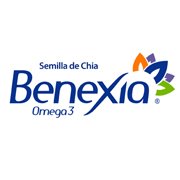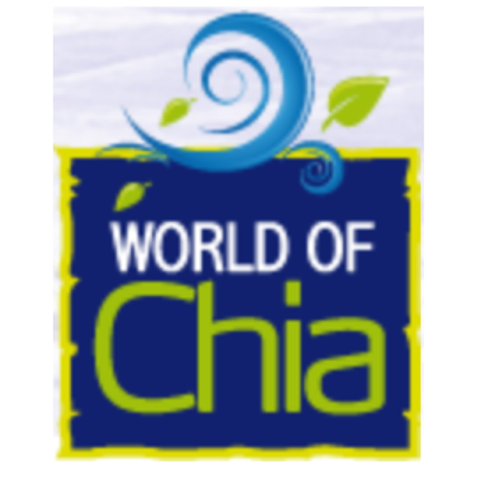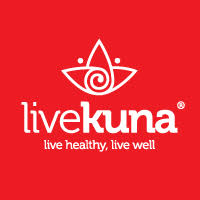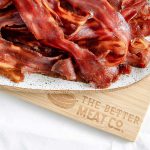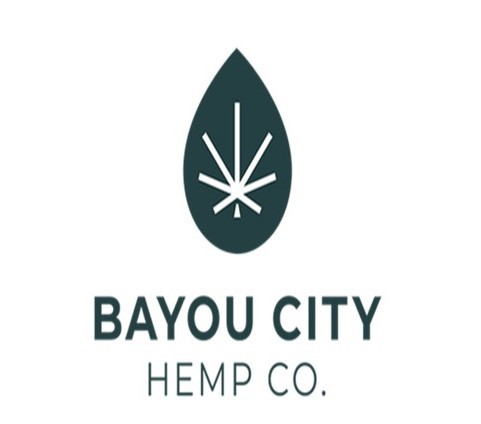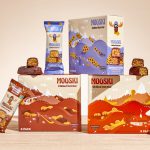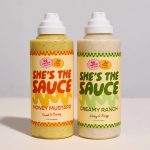More than a Seed: Brands Adjust Strategies to Innovate with Chia
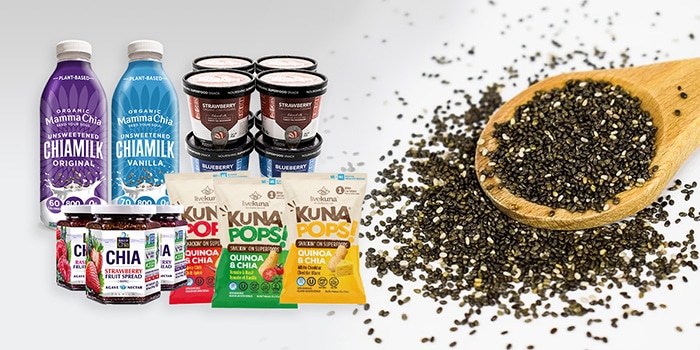
The small but mighty chia seed has increasingly moved beyond beverages, bars and the bulk bin toward savory snacks and breakfast food as consumers seek added function from everyday foods. But after a temporary boom in attention during the middle of the last decade, under brands like Health Warrior, the Chia Company, and Mamma Chia, the ingredient still hasn’t fully reached the masses. Maybe it’s the slimy texture, or the case of a “superfood” not finding its proper costume, but even though the seed has its loyalists, brands are still searching for unique ways to invigorate the ingredient — leaning on its functional benefits to power low-sugar products alongside strong sustainability stories.
The function-forward mindset may prove powerful in reaching consumers, many of whom have become increasingly health-conscious during the pandemic — and who have increasingly looked to food and beverage for solutions. Chia seeds are rich in omega-3 fatty acids, fiber, protein, calcium, phosphorus and zinc, according to Harvard’s T.H. Chan School of Public Health. As a longtime health store staple, the ‘superfood’ perhaps first gained mass appeal via Mamma Chia, launched in 2009, and as a featured ingredient in Health Warrior bars, which launched in 2011. Since then it has become a common ingredient in the bar set and increasingly gained more mainstream appeal; for example, industry institution Del Monte Foods launched Fruit & Chia cups in 2018.
However, as the ingredient has become ubiquitous, research firm SPINS found that chia product sales overall have been contracting since 2018, with many categories containing chia seeing declines in the past year. Still, the launches keep coming: in 2019, 63 new items with chia launched, and some categories saw growth, including refrigerated dips and salsas, refrigerated plant-based meat alternatives, and shelf-stable seed and nut butter alternatives. Nevertheless, in these categories, chia is used as a binding or thickening ingredient rather than as a more prominent featured ingredient.
At the same time, dollar growth for wellness bars — bars that include some type of functional ingredient — containing chia dropped 57.6% for the year ending May 17, while wellness gels and other snacks containing chia grew 838.5% in dollar sales. Though functional in its own right, brands now seem to be looking to pair chia with other functional benefits like probiotics or lean toward low-sugar claims.
“While products with added chia as a functional ingredient are showing declining sales, there is opportunity for chia products targeting specific low carb diets like Whole 30 and keto due to the low net carbs of chia,” Scott Dicker, SPINS’ customer insights manager, said.
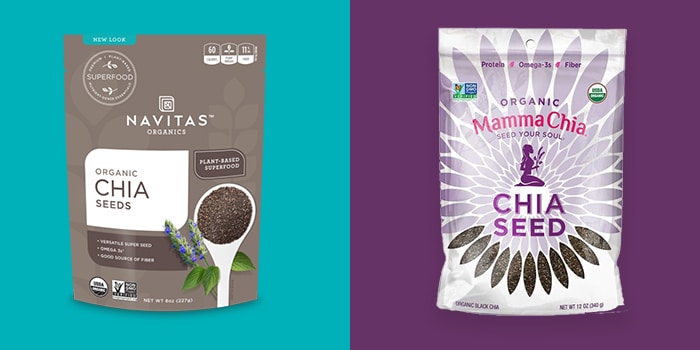
Planting the Seed
For some consumers, chia seeds alone remain an important staple — one that’s increasingly found in bulk bins and as private label offerings. But for those newer to the ingredient, it may take time to accept it.
Superfood brand Navitas founder and CEO Zach Adelman said that chia seeds became a “darling ingredient” in bars and beverages in the last 10-15 years, acting as a “good entrypoint into the world of superfoods.” Navitas, he said, was the first to launch organic chia seeds in the U.S. in 2007, and the seeds continue to outpace the brand’s chia powder for customers who enjoy the product in its natural state.
“They’re super familiar with the seed, so that’s generally where they go,” he said.
For organic chia brand Mamma Chia, chia has always been the guiding star — after all, the nutrition-packed seed is the “real deal, not fairy dust,” CEO Janie Hoffman said. But after a decade promoting a wide-ranging portfolio of chia products, Mamma Chia’s chia seeds are just starting to see traction, and the company will aim to expand them into more stores this year.
The company’s initial product line, Organic Chia Beverages, are sold in over 10,000 stores including Walmart, Target and Safeway. Brand loyalty remains strong, Hoffman said, and Mamma Chia is usually still the only chia-based beverage in the larger functional beverage set.

Although chia is powerful in its own right, the brand has found that adding more functional benefits draw consumers in. Last year Mamma Chia launched Prebiotic Squeezes, an enhanced version of its original fruit and vegetable-based Chia Squeezes that launched in 2013. The Prebiotic Squeezes have seen an uptick during the pandemic, Hoffman said.
However, the brand also wants to simplify and will this year focus on SKU rationalization to hone in on top-selling flavors.
“Innovation is the lifeblood of Mamma Chia, but we definitely have too much out here,” she said.
Additionally, as consumer preferences have evolved — namely toward lower-sugar options — this year Mamma Chia will reduce sugar content across its beverage line. More low-sugar innovation is also on the table: earlier this year the company launched a new line of unsweetened plant-based chia milks, which are in 425 stores so far. Once the new lower-sugar chia beverages roll out, the plan is to invest in digital media efforts, partner with keto influencers and add a ‘keto-friendly’ callout to labels to attract new consumers, Hoffman said.
As the brand refreshes its offerings, Hoffman said she hopes more chia food and beverage products will emerge, especially organic ones.
“We’re seeing more and more things chia, and I think that’s great,” she said. “We have a love for chia [that’s] obviously very deep and at the core of our purpose.”
From the Land
For both Mamma Chia and other chia-centric brands, tying their messaging back to where and how chia is grown is important.
According to Mamma Chia, chia originally grew in Mexico and Guatemala, but it is now grown in several other countries including Argentina, Ecuador and Paraguay. Hoffman first found chia on a farm in San Diego, and the company sources it from growers throughout North, South and Central America. The brand bills itself as having been the first organic chia food and drink brand.
The sourcing story is also crucial to superfood brand LiveKuna, which started in Ecuador and launched in the U.S. in 2015. Santiago Stacey, co-founder and CEO, said “kuna” means “to give” and is core to the company’s mission: the brand sources directly from Ecuadorian and Bolivian farmers and provides a tracking code for consumers. The company also partners with nonprofit Me To We to provide a percentage of sales to children in Ecuador to help them grow their own food.
“[Consumers] want tangible results,” Stacey said. “They want to be part of the positive impact. It gives [them] peace of mind to not only be buying something healthier and tasty — but [also that] they are contributing.”
Ingredient company Benexia sources chia from its own farmers’ collective in Bolivia. CEO Sandra Gillot said controlling its own chia supply is a key selling point for the company’s CPG brand, Seeds of Wellness.
“The integration is wonderful because you control everything, know exactly where the chia is coming from, who grew it, the production lot number and can guarantee to the customer what you’re really selling,” Gillot said. “This is how it should be.”
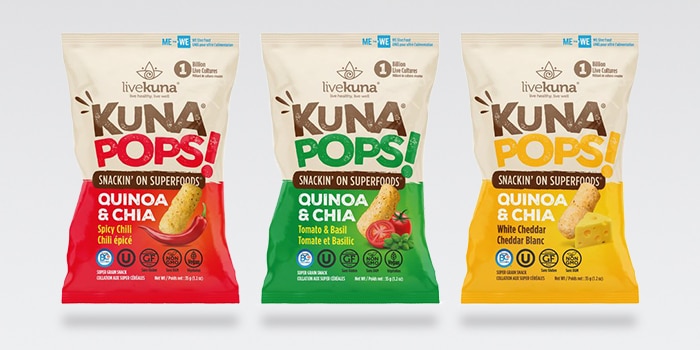
Function Forward
Even as chia seeds have become more prominent, brands have found that selling the seed alone doesn’t always spell success. In turn, brands are finding ways to offer unique chia products as consumers seek to conveniently add more superfoods to their diets.
LiveKuna launched its chia seeds in the U.S. to little fanfare, but in 2016 “took chia to the next level,” Stacey said, by launching a probiotic-boosted chia powder. It didn’t hurt that probiotics were becoming trendier at the time, Stacey noted, but the added functionality was vital: probiotics actually enhance chia’s prebiotic content, creating a “symbiotic effect,” he said. Though telling that story was challenging, the product still expanded from 40 club stores to 400 within three months of launch, generating $1.4 million in six months. Stacey said the probiotic aspect helped “create more awareness” for chia’s benefits.
“When we approach innovation we approach it from a nutrition angle first,” Stacey said. “We were using it for the health aspect instead of a marketing tool.”
The strategy has paid off with the company growing 15-20% year-over-year so far in 2020, Stacey said. Following the trend of “convenient” superfoods, LiveKuna in 2018 launched KunaPops, chia and quinoa-based puffs, and will this year launch a sweet version and cereal in the U.S along with superfood pastas. This week the brand will also debut a new e-commerce platform offering “superfood bundles.”
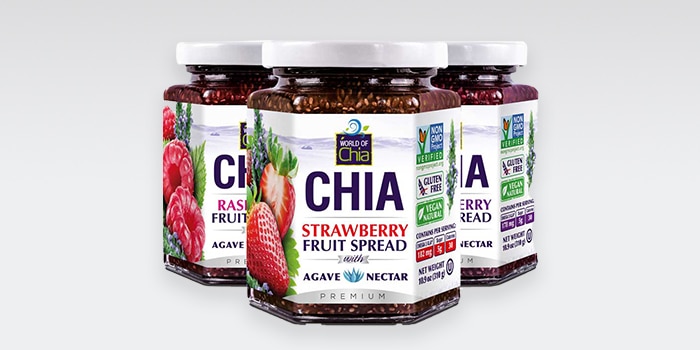
Texture Matters
Fernando Ramirez, founder of Space Enterprises, saw promise in introducing chia in an approachable, everyday food with a low-sugar bent. In 2013 he launched fruit spread brand World of Chia, using chia to replace pectin in low-sugar jams and create a unique texture.
“The key to our product success is the quality of the product and the great flavor and texture we were able to achieve, which you cannot replicate with other ingredients,” he said.
When World of Chia started, Ramirez noted, chia was a “buzzy” ingredient in the media and books. While that initial buzz has faded, and many remain dedicated to chia for its health benefits, the seed’s “slimy” texture still doesn’t sit well with a broader audience, he said.
Ramirez said many consumers remain dedicated to the brand’s original line, which retails for $6.99. To reach more shoppers, the company added two lower-priced lines: Standard, which retails for $4.69, launched in 2015, and Extra Fruit, which sells for $4.99, launched in 2018, but those offerings struggled to stand out in conventional stores, he explained. The next iteration is a “seedless” chia spread made with ground chia seeds, which should appeal to those who dislike chia’s texture, Ramirez noted.
“We are making the spread using a method that keeps the omega-3s in the grinding process, keeping the nutritional value of chia intact,” he said. “This is to create a nice, smooth and creamy spread with the healthy benefits. Some people do not like the seeds in their teeth.”
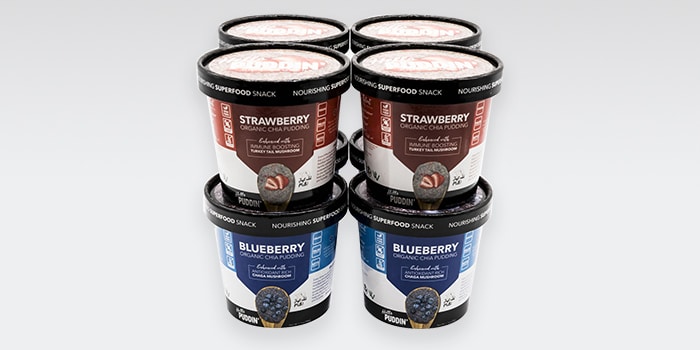
Also aiming to turn chia into an everyday food staple, Hello Puddin’ in 2017 launched a line of shelf-stable, no sugar added chia puddings with functional ingredients like reishi and chaga mushrooms. Although chia pudding hasn’t gained widespread traction in the U.S., founder Danielle Gormley said, it is popular in some European countries. While mostly sold online so far, the brand will soon launch in some California-based retailers, including Raley’s and Lunardi’s, with an MSRP of $4.99. The goal is for the shelf-stable puddings to stand out against cereals and oatmeals, Gormley said, in terms of use case and positioning.
“Having a long shelf life is so crucial,” she said. “It gives me a lot more wiggle room – and allows for flexibility for grocers. Anytime you can be in the breakfast category that’s a habit forming thing; everybody has a favorite cereal.”



